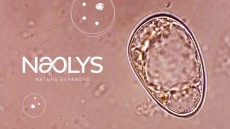Probiotics in cosmetics: Huge potential, but need for greater scientific understanding – new review

A new review has detailed the beneficial potential of probiotics in skin care, and highlighted where there are gaps in knowledge.
Probiotics and their extracts play an essential role in the cosmetics market. They are valued for enhancing the skin barrier, promoting water absorption, and exhibiting remarkable properties in delaying the ageing process.
Despite these advancements, there is a notable lack of studies detailing the mechanisms of action of probiotics in cosmetics applications.
Benefits and Mechanisms
The current array of probiotic cosmetics prioritises hydration, skin barrier repair, collagen and elastin replenishment, and provision of antioxidants, states the review.
Notable examples include Streptococcus thermophilus S244 and Streptococcus salivarium spp., known for their effectiveness against dryness. Previous clinical trials had unveiled their role in maintaining a healthy stratum corneum, boosting ceramide levels, and ensuring skin flexibility.
On the other hand, heat-killed Lactobacillus acidophilus KCCM12625P has demonstrated antioxidant properties. A combination of Lactobacillus fermentum TKSN041 and β-Nicotinamide Mononucleotide (NMN) boosts skin antioxidant capacity, promising a potent defense against photo-ageing.
For skin whitening, probiotics inhibit tyrosinase activity, a key enzyme in melanin production.
Bifidobacterium IDCC 4201 and L. plantarum IDCC 3501 showcase anti-tyrosinase effects, while Staphylococcus lactis PMC48, derived from Kimchi, stands out for its ability to inhibit, destroy, and degrade existing melanin.
In the realm of anti-inflammatory cosmetics, topical probiotics have shown efficacy in conditions like rosacea, atopic dermatitis, and acne. Particularly, Lactobacillus, Bifidobacterium, and Streptococcus.
They have also showcased their immune-modulating effects, hindering biofilm development, reducing systemic inflammation, and competitively inhibiting pathogen binding sites.
In a breakthrough study, Lactobacillus reuteri DSM 17938 was found to reduce irritation caused by UVB exposure, states the paper.
Meanwhile, the anti-inflammatory properties extend to Bifidobacterium longum (BL) lysate, incorporated into cosmetics to enhance parameters related to inflammation, addressing concerns like vasodilation, edema, mast cell degranulation, and reduced TNF-α release.
Probiotics also proves instrumental in managing atopic dermatitis, countering Staphylococcus aureus colonisation with the use of heat-treated cosmetic lotions containing Lactobacillus johnsonii NCC 533 (HT La1).
Particularly, ceramide-rich bacterial extracts are employed to combat aberrant skin function associated with atopic dermatitis, reducing erythema, scales, and pruritus.
Probiotic fermentation: A new frontier
The researchers also point out that probiotic fermentation is a revolutionary method with the potential to improve the effectiveness of skin care products.
The process changes the chemical structure of medications, improving epidermal absorption, and lowering toxicity for optimal pharmacological effectiveness.
Fermented extracts demonstrate heightened antioxidant and anti-ageing capabilities compared to their non-fermented counterparts.
For instance, the fermentation of Acanthopanax Korean root extract by L. plantarum and Bifidobacterium bifidum showcases significant promise in reducing intracellular ROS induced by UVB or H2O2.
Similarly, patchouli leaf extract, post-fermentation with L. rhamnosus, enhances the skin's resilience against photoaging, increasing levels of superoxide dismutase (SOD) and glutathione (GSH) while reducing reactive oxygen (ROS).
Studies also revealed the transformative impact of L. rhamnosus fermentation on jasmine extract, slowing collagen breakdown and preventing premature aging induced by UVB and H2O2.
Beyond direct applications, the fermented by-products of probiotics showcase versatile properties. The Lactobacillus rhamnosus LRH113 strain's fermentation supernatant exhibits promising whitening and moisturizing properties, hinting at its potential use in future skin care maintenance products.
Future directions
Researchers acknowledge that the cosmetics industry in witnessing a paradigm shift with the integration of probiotics.
While current research highlights the benefits of probiotics in cosmetics, there remains a gap in understanding the precise mechanisms of action.
To harness the full potential of probiotics in cosmetics, future studies should focus on the bioactivity of probiotic fermentation, exploring the link between the manufacturing process and biological effects.
Additionally, more comprehensive studies involving various probiotic strains on human skin are crucial to validate therapeutic advantages observed in vitro.
Source: Molecules
Applications of probiotic constituents in cosmetics
https://www.mdpi.com/1420-3049/28/19/6765
Authors: Jiaxin Dou et al.










![Laboratoires Expanscience introduces a ceramide-boosting flaxseed active to cater to trends such as regenerative skin care and supports regenerative agriculture. [Getty Images]](/var/wrbm_gb_food_pharma/storage/images/_aliases/wrbm_tiny/publications/cosmetics/cosmeticsdesign-asia.com/headlines/formulation-science/expanscience-ceramide-boosting-flaxseed-active-taps-into-regenerative-skin-care-trends/17408373-1-eng-GB/Expanscience-ceramide-boosting-flaxseed-active-taps-into-regenerative-skin-care-trends.jpg)

![Estée Lauder will launch new products developed by a local team especially for its Chinese consumers in Q4. [Estée Lauder]](/var/wrbm_gb_food_pharma/storage/images/_aliases/wrbm_tiny/publications/cosmetics/cosmeticsdesign-asia.com/headlines/brand-innovation/estee-lauder-set-to-debut-first-products-developed-by-china-r-d-facility-in-q4/17401473-1-eng-GB/Estee-Lauder-set-to-debut-first-products-developed-by-China-R-D-facility-in-Q4.jpg)
![ESG considerations have emerged as a central focus for China's beauty brands. [Getty Images]](/var/wrbm_gb_food_pharma/storage/images/_aliases/wrbm_tiny/publications/cosmetics/cosmeticsdesign-asia.com/headlines/market-trends/china-s-beauty-brands-embrace-esg-focus-as-consumer-priorities-shift/17304986-1-eng-GB/China-s-beauty-brands-embrace-ESG-focus-as-consumer-priorities-shift.jpg)


![China’s beauty market is experiencing significant industry shift with the mass beauty market accelerating ahead of the luxury segment. [L'Oréal]](/var/wrbm_gb_food_pharma/storage/images/_aliases/wrbm_tiny/publications/cosmetics/cosmeticsdesign-asia.com/headlines/market-trends/china-s-mass-beauty-market-now-more-dynamic-than-luxury-l-oreal-ceo/17375859-1-eng-GB/China-s-mass-beauty-market-now-more-dynamic-than-luxury-L-Oreal-CEO.jpg)


